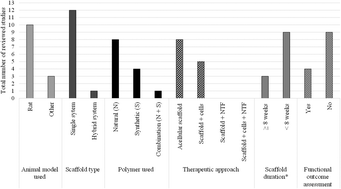3D scaffolds for brain tissue regeneration: architectural challenges
Abstract
Biomaterials are being utilized to engender biomimetic, pro-regenerative constructs in the form of 3D scaffolds to augment functional neural tissue (brain tissue) repair and regeneration. Tissue engineered three-dimensional (3D) scaffolds have shown various degrees of experimental success, indicating great potential for development as treatment options. However, there is yet to be a 3D scaffold that exhibits consummate results of an effective clinical standard. Critical assessment of the performance of current 3D scaffolds could provide insightful feedback for tailoring future 3D scaffolds towards more promising results. This review provides a critical analysis of current 3D scaffolds for neural tissue engineering. Architectural properties, such as porosity, swelling, and architectural influences, such as design approach and polymeric material choice, were scrutinized for suitability for the desired tissue target properties. Success and shortcomings of various 3D scaffolds were evaluated through the analysis of tissue integration of the 3D scaffold in vivo. Investigations focused on in this review included those: (1) reporting at an in vivo experimental level in animal models, (2) involving polymer-based (natural/synthetic) scaffolds described as possessing a ‘3D’ architecture, (3) targeting brain tissue regeneration (4) published from 2011 onward.



 Please wait while we load your content...
Please wait while we load your content...